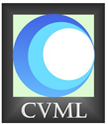 |
Computer Vision and Multimedia Lab |
 |
Computer Vision and Multimedia Lab |
|
|||||
|
|
In this paper, we propose a novel annotation placement approach for revealing information of foreground objects in surveillance videos. To arrange positions of annotations, spatiotemporal coherence between annotations and foreground objects is applied. The annotation placement problem is formulated as an optimization problem with respect to spatiotemporal coherence of annotations and foreground objects. The optimization problem is effectively solved by using Markov random fields (MRFs). To the best of our knowledge, this paper is the first work to discuss and solve the annotation placement problem for surveillance videos by considering the relationships between annotations and foreground objects with trajectories. As shown in the experiments, the proposed approach can arrange annotations based on the moving trajectories of foreground objects and prevent the occlusions between different annotations and foreground objects. It also achieves better quantitative and qualitative results compared to state-of-the-art approaches. |
|
|
[1] Wei-Cheng Wang, Chien-Yu Chiou, Chun-Rong Huang, Pau-Choo Chung, Wei-Yun Huang, "Spatiotemporal Coherence based Annotation Placement for Surveillance Videos," IEEE Transactions on Circuits and Systems for Video Technology, vol. 28, no. 3, pp. 787-801, 2018. |